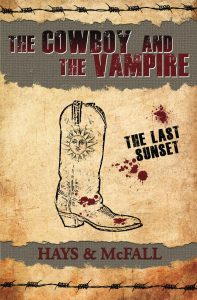The Rundown
The Recommendation
The Rating
The Links
The Reviewer
Lauren Faulkenberry
Visit Lauren Faulkenberry‘s website.Writing dialogue is tricky. It needs to sound realistic, but it can’t be too realistic. We all want our characters to sound like real people, but when people talk, there are a lot of unnecessary words tossed around. As writers, we have to carefully craft what our characters say so that the words seems effortless, but yet serve a purpose (like all of our other words, right? Right.).
So how do you create killer dialogue that seems effortless and does its job? Read on.
1.Let dialogue propel your story. Too often we fall into the mire of backstory and lose the reader. Break up those huge passages of exposition and let your active scene reveal the same information through character interaction. For example: instead of writing pages and pages about your heroine’s recollection of a pivotal event in her childhood, have her argue about that event with her sister, revealing what happened through their dialogue. Bonus: you’ll also reveal something about the sister.
2. Train your ears with TV shows, movies, and plays. The best thing I ever did for my fiction writing was to take a scriptwriting class. Stuart Spencer’s The Playwright’s Guidebook will change your life. This will teach you to make every word count, and to use dialogue the same way you use exposition: to reveal character, create drama, and keep moving the story forward. Some TV shows I love for their dialogue: Gilmore Girls, the Newsroom, Justified, and yeah, Buffy the Vampire Slayer. It’s super easy to get copies of plays, like Closer and How I Learned to Drive, for less than $5. Check out contemporary award-winning plays as a starting point.
3. Pay attention to the way people talk. I mean really pay attention. Listen for little idiosyncrasies that make a person’s speech unique. Do they speak in clipped, short sentences? Do they ramble and use ten-dollar words? Do they answer you with questions? One of the hardest things to overcome is the tendency to make all of your characters talk the way you do. You may be sharp and sarcastic, but if ALL of your characters speak that way, then your writing becomes unrealistic and boring. You need variety, and for that you need to develop an ear for differences in people’s speech.
4. Remember that people rarely speak in well-crafted sentences. You can always have a character that is super-eloquent and that’s part of their speech and personality, but for most of us, our dialogue is clipped and messy. In real life, people talk over each other, they interrupt, and they shorten phrases. “Doing ok today?” “Yeah, you?” As you revise, cut the unnecessary words from your dialogue to keep the story moving.
5. Use dialect and slang spelling sparingly. While it may seem accurate to you, the writer, it can be jarring to readers. I’ve tossed a lot of books aside simply because there was too much dialect forced on me—too much “lotsa,” “somethin’,” and “nuttin.” Instead of having your southern character drop the ‘g’ in every single word, write a line of exposition that describes his Carolina lilt and limit his shortened words to only “darlin’.” Nail that regionalism in one good line of description, and that’s all your readers need to hear him the way that you intend. Trust your reader not to need words spelled out phonetically to comprehend what an accent sounds like. Saying something like, “When she said my name, it sounded like Crease,” is enough to get your point across.
6. Read your dialogue aloud. Better yet, get a couple of your friends to read the dialogue in your scene as if it were a scene in a play. Have them only read speech, with no narrative. Listen for #1-5 above. Do your characters sound different from one another? Do they have distinct voices? Eccentricities? Does it sound like a real conversation, or does it sound over-written? If you struggle with dialogue, it makes a world of difference to hear it spoken rather than simply read it over and over as you revise.
7. What’s not being said in a scene is equally important to what is being said. Subtext is a valuable tool in your writerly arsenal. What is omitted in a conversation can be extremely important to character and plot, and a good writer of dialogue knows what needs to be said and what does not in order to create tension and suspense.
As an exercise, go back to one of your favorite books and turn to a scene that is heavy with dialogue. Look at it in terms of the list above. How does the author make the characters’ voices distinct? How is the dialogue used to move the story forward? Is the dialogue conveying information that might have been told in exposition? One of the best ways to learn to write good dialogue is to read good dialogue—so get out there and start picking those scenes apart. The more you study, the easier it will be to see what works and what doesn’t. The surest way to write dynamic dialogue is to practice until you hear the characters talking in your head—that's when you know you've leveled up.










